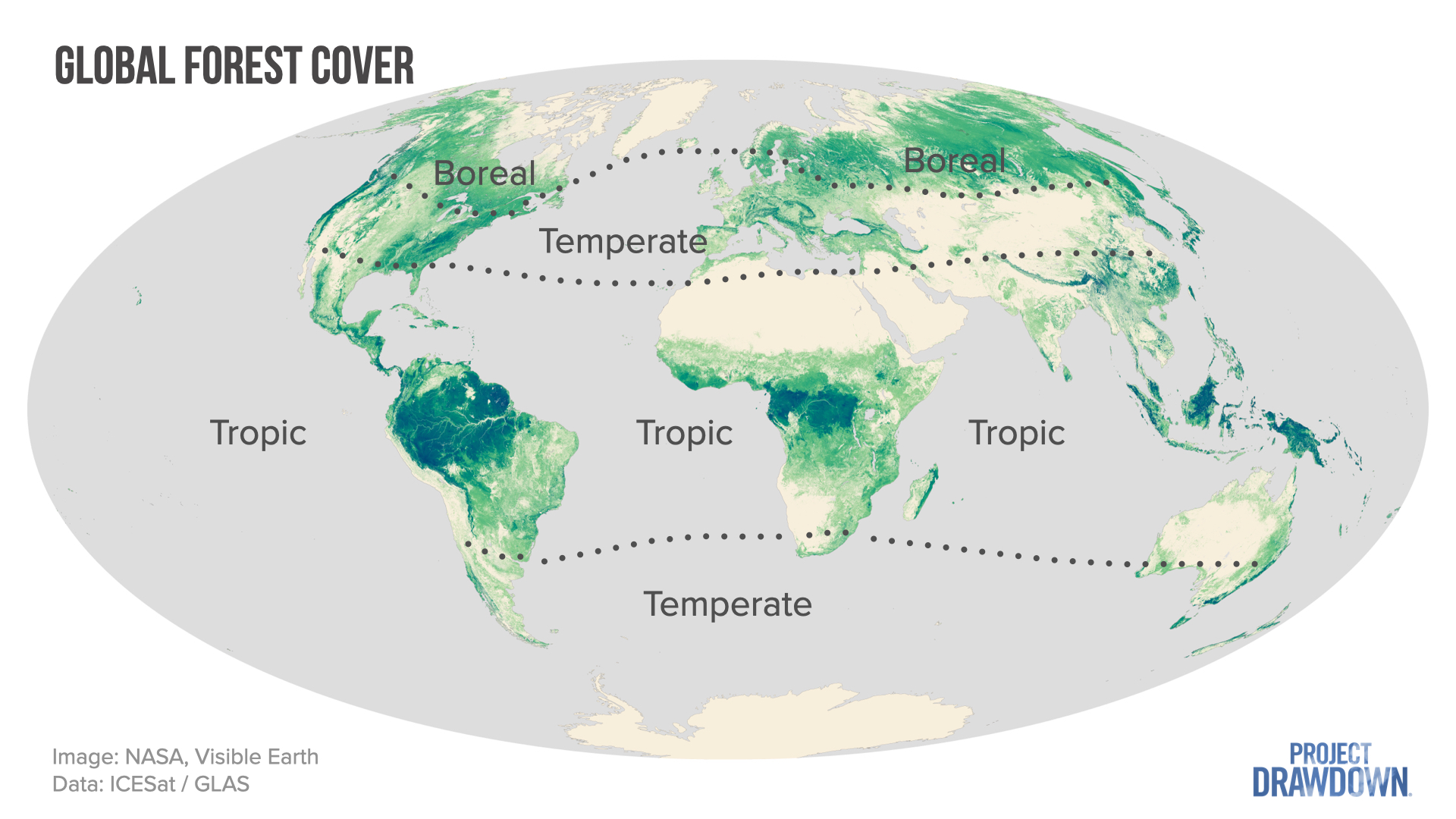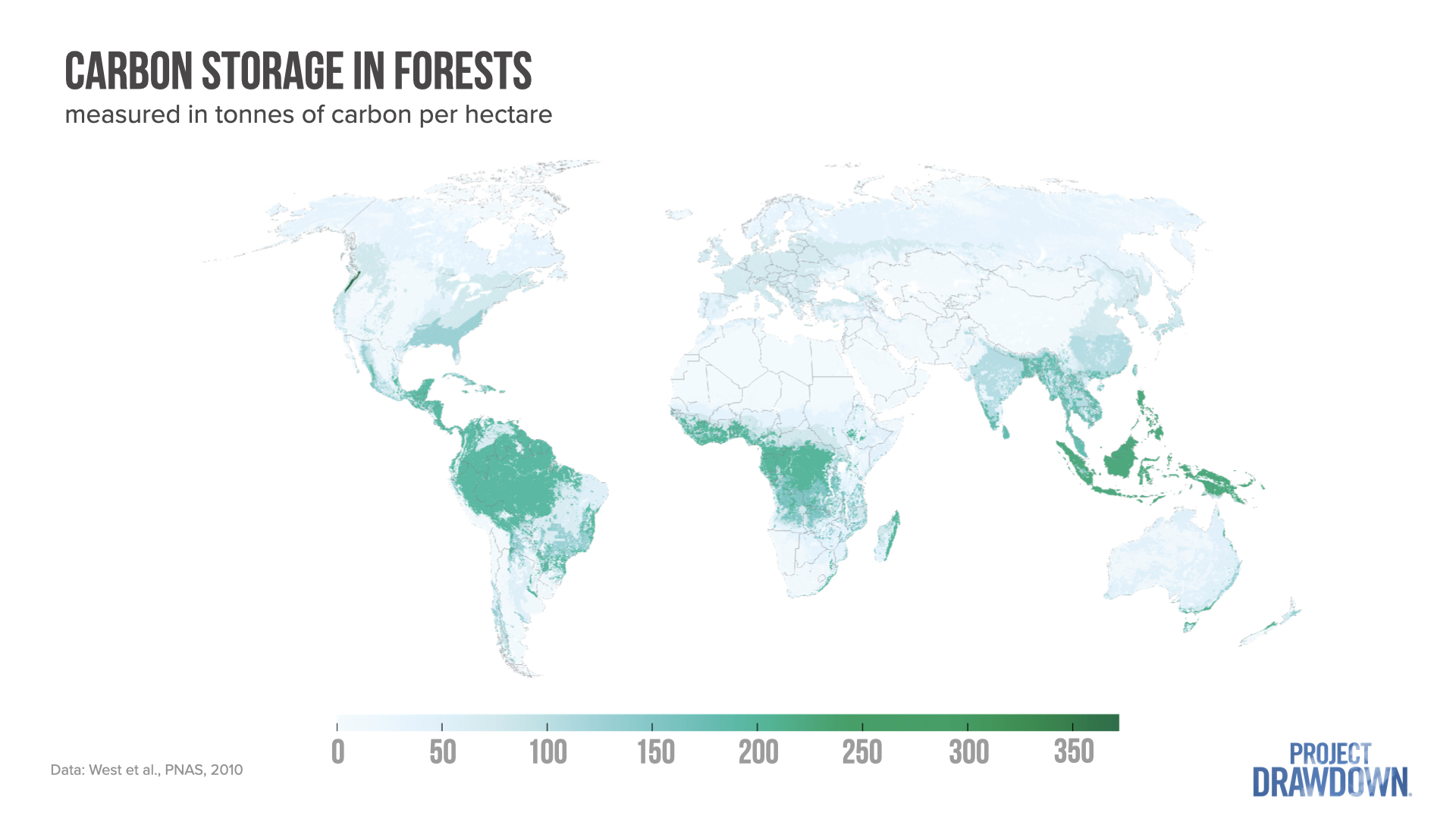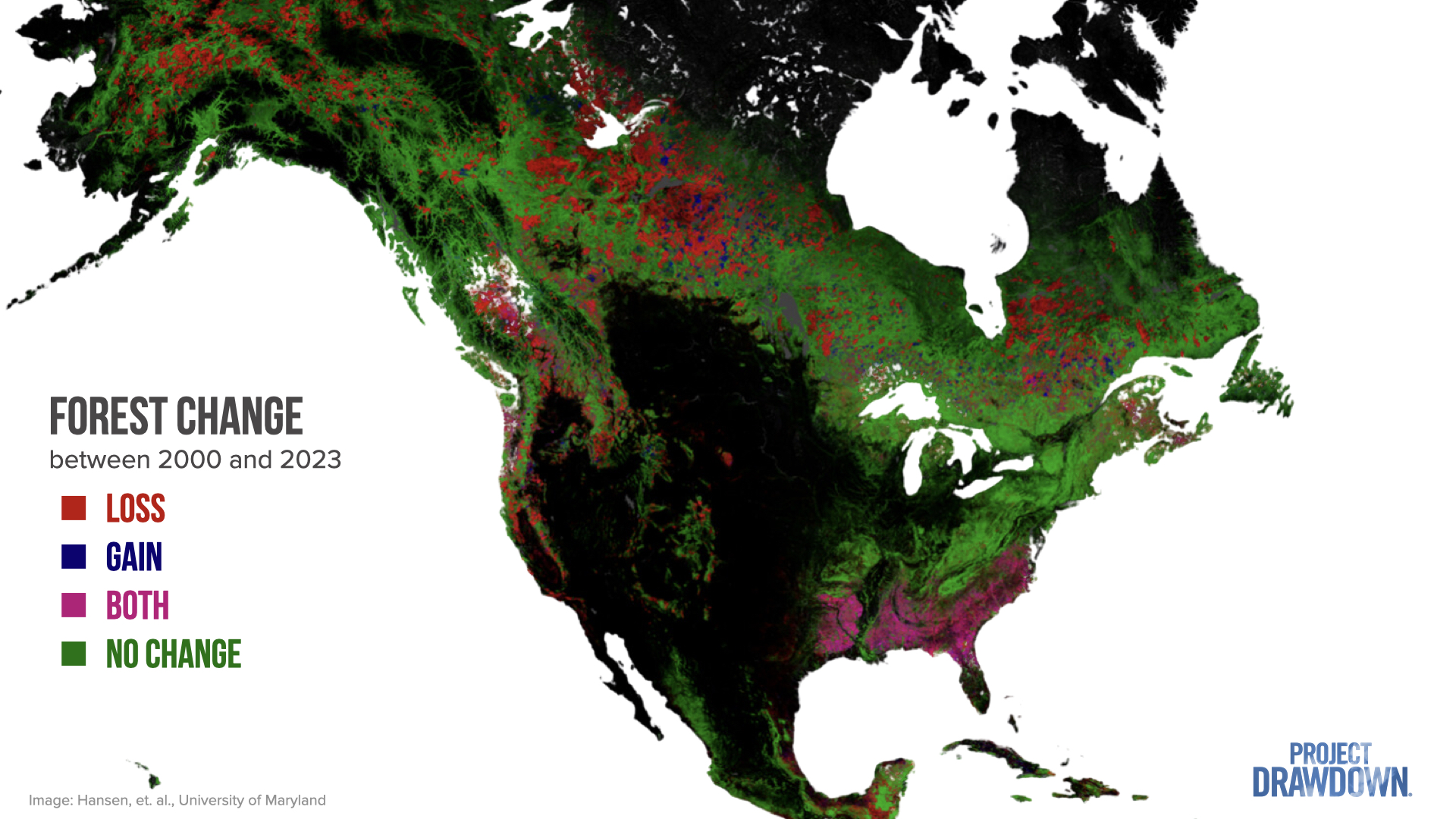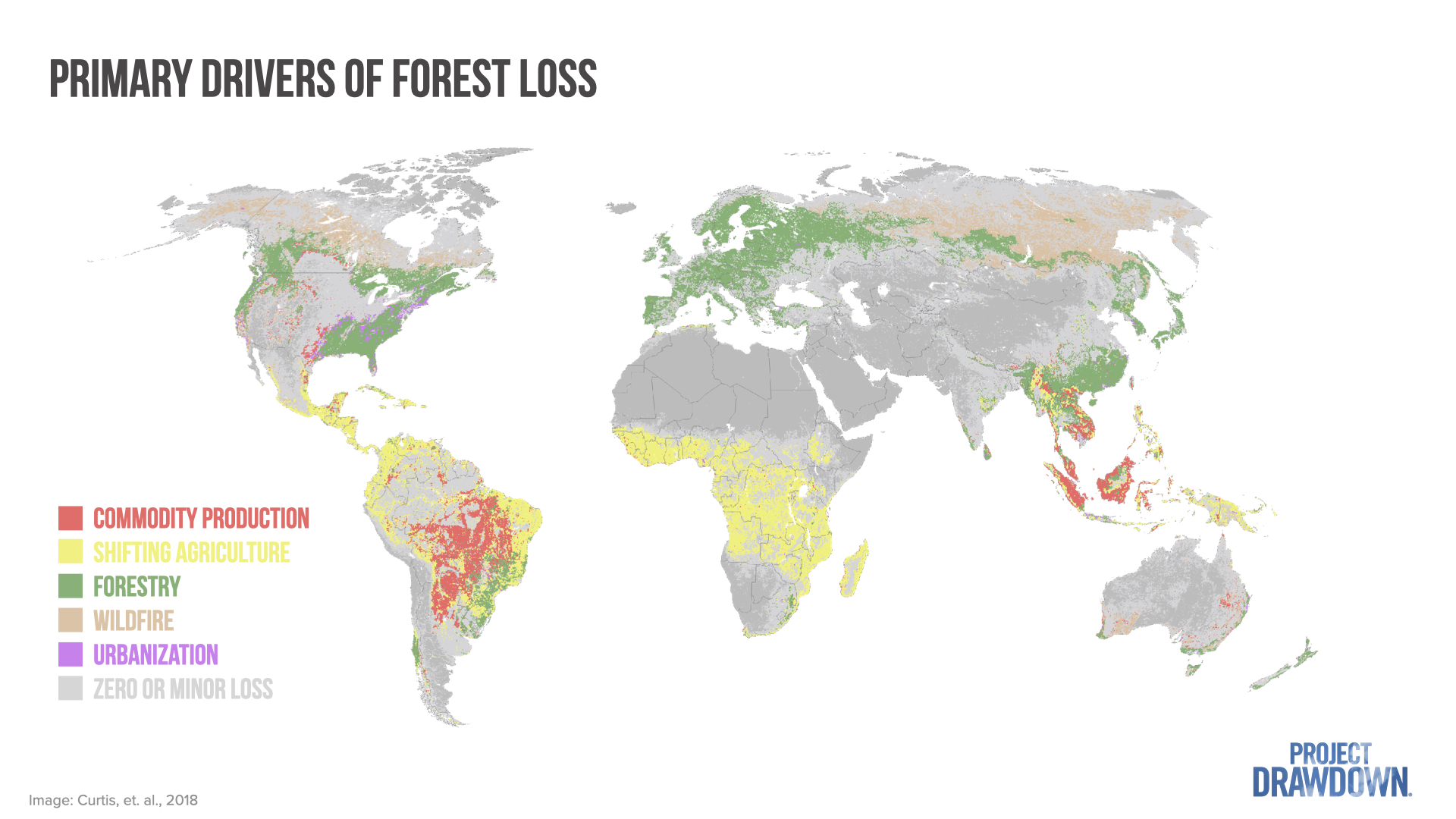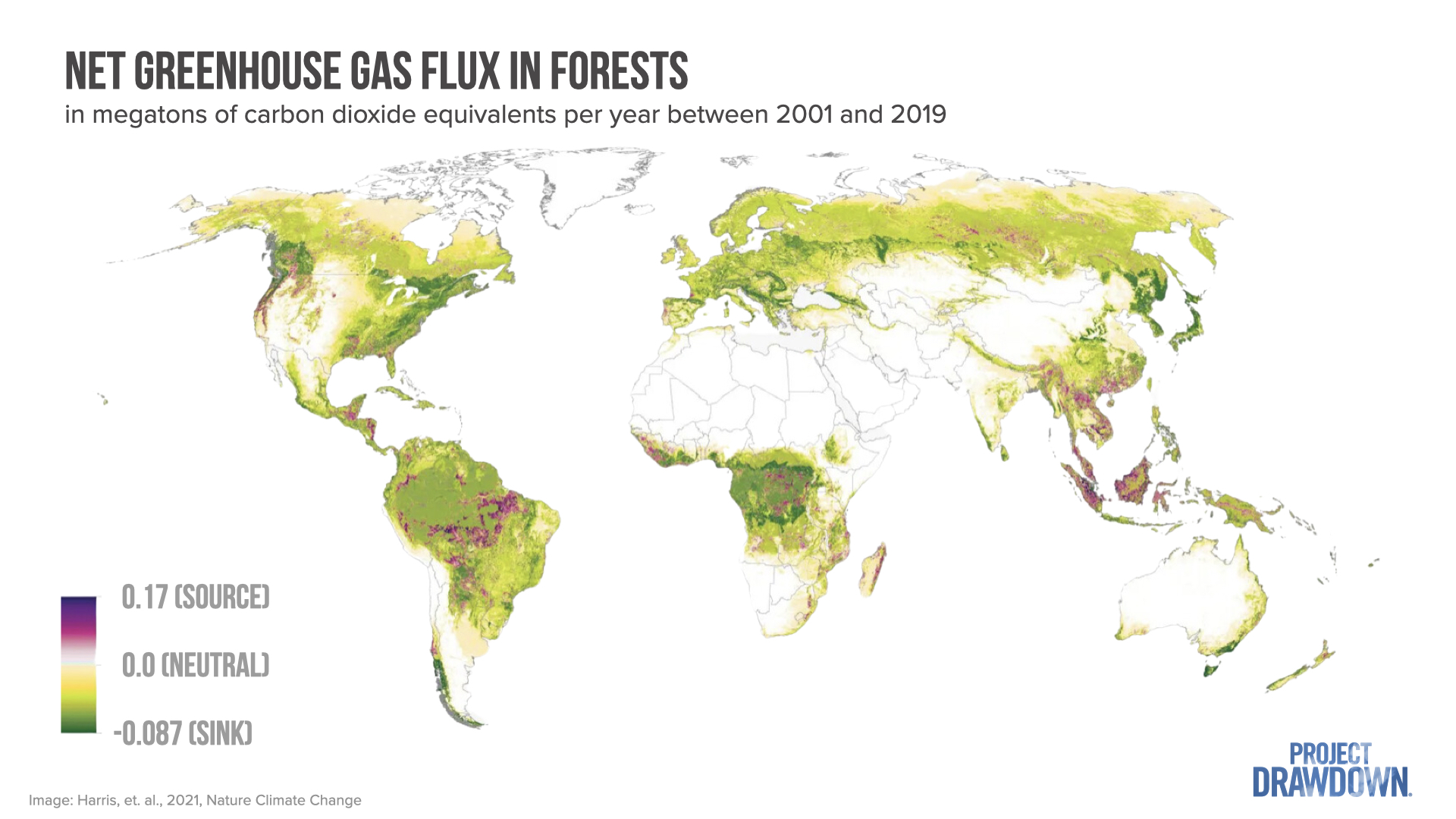This session covered the science of forests and climate change. Jonathan Foley, Ph.D., executive director of Project Drawdown, unpacked key drivers and trends in deforestation, discussed how to break down barriers to solutions, and shared the most impactful actions to accelerate forest protection as a high-priority “emergency brake” climate solution. We also introduced Forests, People, Climate (FPC), a collaborative of philanthropic donors, civil society, and community-based organizations seeking to halt and reverse tropical deforestation while supporting just, sustainable development.
Speakers: Jonathan Foley Speakers: Jonathan Foley, Ph.D., (Executive Director, Project Drawdown), Daniel Jasper, (Senior Policy Advisor, Project Drawdown), Christina Swanson, Ph.D., (Senior Scientist, Policy and Private Sector Partnerships, Project Drawdown), Lindsey Allen, (Executive Director, Climate and Land Use Alliance)
Key Takeaways
Forests and Climate Change: Science, Policy, Markets, and Actors
- Tropical forests are biodiversity hotspots and provide key natural services that support human well-being, such as disease regulation, water cycling, and carbon storage through photosynthesis. Tropical forests hold ~40% of all land-based “living carbon” but this carbon is released into the atmosphere when the forest is cut, burned, or otherwise removed. Globally, deforestation is responsible for ~11% of greenhouse gas emissions.
- Forest loss drivers vary by region. Cattle grazing, soy production for animal feed, cultivation of palm oil, and other agriculture activities are the leading sources of human-caused tropical deforestation, ahead of forestry/timber or mining. Addressing human-driven deforestation is the most urgent action for climate mitigation since stopping deforestation halts the release of carbon immediately, while forest restoration only increases carbon uptake gradually over decades.
- International policy, treaties, and agreements, as well as global institutions and pledges, strive to stop deforestation by 2030 through a variety of “micro” policy options (e.g., decreasing the value of agricultural products, increasing the value of standing forests, and regulating land use) and “macro” policy options (e.g., stimulating alternative sectors, consolidating the agricultural sector regionally, controlling imports and exports, and altering exchange rates).
- Today’s voluntary carbon market suffers from serious problems with governance, transparency, carbon accounting, and environmental and social integrity. Efforts to improve the integrity of the market are underway and, when they are successful, carbon credits could be an important method for getting badly needed funding to forest protection efforts. However, use of carbon credits by entities to offset their greenhouse gas emissions is not an effective climate mitigation strategy.
Introduction to Forests, People, Climate (FPC)
- Protecting forests can reduce more than 20% of global climate emissions while uplifting forest communities. Indigenous Peoples and Local Communities currently manage 40% of all intact forests and nearly half of the global lands that are in good ecological condition.
- Philanthropic funding is key because it can move quickly and often with a lower administrative burden than public funding. However, less than 2% of the global philanthropic giving goes to tackling the climate crisis, and of this, resources are not equitably distributed to Indigenous and community-led organizations.
- FPC was launched in 2022 with 13 leading philanthropies seeking to achieve three things: (1) mobilize US$2 billion in new funding, especially at the local level, (2) develop strategies shared across donors and funding institutions, and (3) ensure funding and power are distributed equitably, focusing on historically excluded organizations.
- FPC has identified three critical pathways to protect forests: 1) safeguard tropical forests and support the communities stewarding them; 2) shift markets and finance to favor standing forests; and 3) strengthen public support and advance strong policy. In collaboration with more than 600 experts and stakeholders from tropical forest countries, FPC has developed nine detailed strategies that provide a roadmap for grantmaking, action, monitoring progress, and learning.
Key Resources
Charts and Graphics
To download, click the chart or graphic you are interested in, then right-click and save the image as a PNG or JPG to your computer. All charts and graphics below are freely available to use as long as they are appropriately credited.

